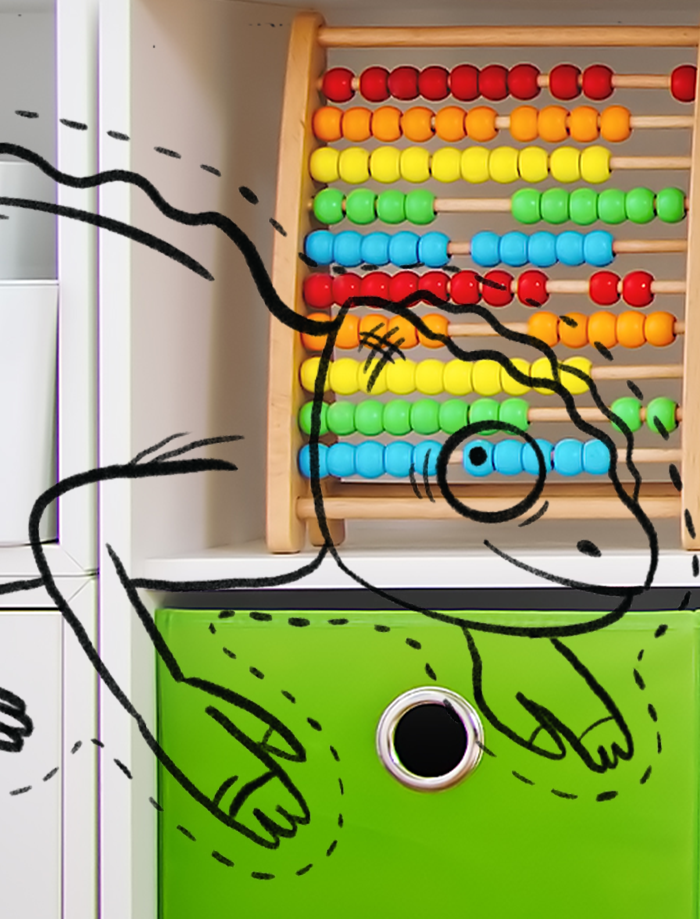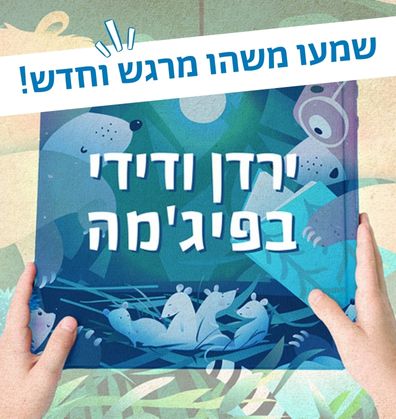טֶבַע וּסְבִיבָה
בעלי חיים וטבע
ילדים וילדות מרותקים מגיל צעיר מבעלי חיים ומנפלאות הטבע ולומדים דרכם על העולם. בעזרת ספרים על בעלי חיים אפשר להעמיק את המפגש עם עולם החי, לפגוש חיות שלא רואים בכל יום ולהפליג בדמיון אל המדבר או אל ג'ונגל ירוק. ספרים שעוסקים בטבע המשתנה, מקרבים אל הילדים והילדות את הרחוק, ועם זאת משאירים מקום רב לדמיון ולהשראה.
סְּפָרִים
Book-Related Family Activities
Tip for Family Reading
Books featuring characters who are imperfect and make mistakes generate empathy, and enable a discussion on subjects that are not easy to directly address. Use this book to spark a discussion and ask questions about the characters’ actions and feelings to encourage your children to express their own inner thoughts and feelings.
Asking for Forgiveness
You may want to ask your children: “What did you think about what Chico said to Pilchas?” “Which situations may lead to a hurtful exchange?”. You can also discuss similar situations they had to deal with, and ask: “Have you ever said something you later regretted?”, “Did you say you were sorry?” “How did you feel afterwards?”
Watch & Learn!
What is the speed of sound that the rabbit was trying to achieve? This Davidson Institute of Science video will teach you all about it using a fun experiment with a sound pipe.
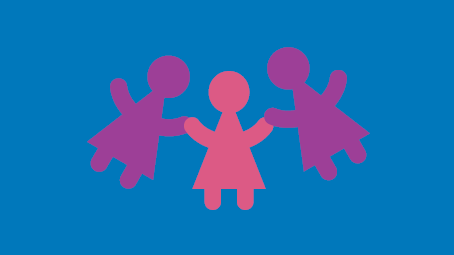
There are many ways to say I’m sorry
You can help Chico ask for Pilchas’ forgiveness in various ways – a letter, drawing, poem, or dance. “Helping” Chico will enable children to develop their own forgiveness-asking skills, and help fix situations even when they seem too hard.

Becoming Marksmen
You can be inspired by this book to have your own marksmanship competition. You can make a bow and arrow using sticks and elastic bands, or take turns shooting balls into a bucket. Don’t forget to decide which of the forest animals you are!
Tip for Family Reading
Sometimes toddlers decline the offer to have a book read to them for various reasons. How can we get them to take an interest in books? We can trigger their curiosity if we leaf through a book ourselves, and remark on details that catch our eye or amuse us. Books should be placed openly and within reach, and you should find the right time for reading, when you and your children are free to comfortably sit together.
For more ideas, look up “How to get children interested in books” on the Sifriyat Pijama website.

When we don’t get what we want
In your opinion, how did the boy feel when he received a cat instead of a dog? Have you ever really wanted something, but received something else instead? What can we do when we do not receive exactly what we wanted?

QR code
Would you like to meet another mischievous cat? Scan the code and listen to the song Hayo Haya Hatul Shovav [There Once Was a Mischievous Cat]

Observing Animals
In this book, the boy discovers the cat’s special qualities: It hops onto your lap, licks you, its fur stands on end, and it purrs. You can observe animals in your vicinity together, and try to identify the unique qualities of each – how does it move? Which sounds does it make? And how does it respond to humans?

Miming and Guessing
The boy received a surprise cat – what other surprising animals can we “bring” home? How does an alligator sit on the couch? How does a snake slither across the carpet? You can play the following game: Take turns miming an animal and have the other players guess which one you are.
Family reading advice
Reading independently:
While reading, toddlers can participate and feel all grown-up and independent. They can choose the book, hold it and turn the pages, point and say words they know. Encouraging toddlers to participate in reading will bolster their sense of capability, and enhance their connection to the world of reading.

Doing things on my own:
You can discuss the things that toddlers learn to do by themselves, and ask: What do you do at home all by yourself? What do you need help doing? Are there things you would like to learn to do on your own? How can we practice something new that you would like to learn how to do?
Characters for Print
Print out the characters from this book, cut them out, stick them onto popsicle sticks, and act the story out yourselves, or make up what happened on the eighth day in the book using these characters.
Download Here! 🐞⚫🔴

Illustrations
The illustrations contained in this book are full of details. You can look for a new detail every time you read it, just like Tim Tam finds a new dot each day. Where is Tim Tam? Where are the black dots? What other shapes can you notice? Which animals appear on each page? Which items can be found at Tim Tam’s house?

Looking for dots
Tim Tam learns to notice the dots around he and find them. You can look for dots and round objects together in your surroundings. Where are the dots hiding? Perhaps on your shirt? Your body? Which round items do we have at home? You may even encounter one of Tim Tam’s ladybug friends.

A ladybug finger:
Use two fingers to lightly tap your child’s arm, leg, or face, and travel along it like a ladybug. Where does it feel nice? Where does it tickle? Where can you feel it more, and where can you feel it less?

Who am I?
“You mimic animals so much that you don’t know how to mimic yourself”, says Shumdi to Arik the lion. You can discuss the things that make each of you special: your voice, body movements, hobbies, favorite food – and what else?

Mimic & guess
Much like Shumdi and Arik, you can also take turns making animal sounds, and having your family guess which animal you were trying to mimic. You can also add the sounds made by objects, and try to mimic the sounds of rain, wind, or any mode of transportation. You can record the sounds you make too, listen to them one at a time, and try to guess which of your family members made it.
Favorite stories
Anat especially likes the stories told by Shumdi the rabbit. Which stories are your personal favorites? You can look for and recall stories that the kids liked when they were infants, as well as well-loved stories that you have not read in a while, put them all together, and read one of your favorite stories whenever you feel like it.

Family reading advice
Toddlers enjoy reading books together, and when they focus on the story, they use their learning, concentration and imagination abilities. To “get into” the story and allow them to concentrate, you should disconnect from the world for a few minutes, sit somewhere calm, with no background noises, screens or mobile phones, and fly together on the story’s wings.

פעם אני החתול ופעם אני החתולה
This short book is full of experiences from toddlers’ day-to-day lives: They want to take part, sometimes they experience rejection, they strive to be independent and are busy finding solutions. You can discuss such moments in the story with your toddlers and link them to their world: What did the girl cat want? How did she feel when the boy cat didn’t want her to join him? What did she decide to do? Do you also enjoy going out for a walk? And what do you like doing all by yourself?
Let’s go for a walk!
You can suggest packing a small bag and going for a walk with your toddler, just like the girl cat, in your home or neighborhood. Together, you can think of all the things you need to take with you on your walk – a bottle of water? A hat? How about a toy?

What do the illustrations tell us?
When you look at the illustrations together, you could focus your attention on different things each time – Where is the boy cat? And where is the girl cat? What are they doing? Which items can you identify in the picture?

Reading advice: Befriending a book
Reading books from a young age contributes greatly to toddlers’ development. Starting to read slowly and gradually is recommended. At first, toddlers may be allowed to connect to the book in their own way: Touch it, open and close it, look at the illustrations, and become curious. Later, you can read: Read a little each day, patiently and calmly. Some toddlers will prefer to be read a single page, get familiar with it until – hey – books have become their friends!
What happens along the way
We can make interesting discoveries if we only pay a little attention. You may enjoy discussing what you see as you walk or take a drive: “Here is a red car!” “I see clouds. What do you see?” You can also share experiences with your toddler: “On my way to work today, I saw a lady walking her dog. What did you see on your way or back from daycare?”
Why read with toddlers?
Scan the QR code to discover how books’ contribute to toddlers’ development.

Morning ritual
Like the boy in the book, all toddlers enjoy rituals that generate a fixed routine, calm them down, and help them start their day feeling good and happy. You can also have your own morning ritual. For example, you can encourage your toddler to say good-bye a beloved stuffed toy: “Teddy, Teddy, I’m going to Kindergarten, goodbye!”, while you parents reply on behalf of the bear: “Goodbye! See you later! Have a safe journey!”

Encountering animals
Many animals appear in the book. You can look at them together, and state their names, make the relevant sounds, and mimic their movements: Crow like a rooster, hop like a bunny, or gallop and neigh like a horse. You can also look at the illustrations on the final page, cover one of the animals each time, make the relevant sound or mimic its movements, and have your toddler guess which animal it is.
A tip for family reading
When reading a songbook, you can focus on one song at a time, read it several times, or sing it, if it has a tune. Try looking at the drawings together, and note where the toddler’s attention is drawn. Every so often, you can add another song from the book and see what reactions it evokes, and whether it’s fun and intriguing.
Other animals and us
You will encounter various animals in the book. The toddlers will know some of them. Others will be new and exhilarating. Whenever you encounter animals nearby, you can draw the toddler’s attention to what’s special about the animal – “the bird has a beak”, “the ants march in a line”, or “the snail carries its house on its back”.
Singing with your whole body
You can use gestures as you sing. For example, when you sing “Come, Little Butterfly”, you can invite the butterfly with a beckoning gesture, flap your hands, and tap on the toddler’s hand. Which gesture would you use for a monkey cracking up? Or a bear climbing a ladder?
A piece of advice when reading as a family
Toddlers “read the illustrations”. Looking at illustrations teaches toddlers to pay attention to detail, while exposing them to art. You could occasionally ask questions related to the illustration, such as: Where’s the fly? What is the chameleon doing?
Color-reading
While reading, you may want to draw your toddlers’ attention to the main color that appears in the text and illustration. Even if your toddlers do not know the name of these colors yet, they would be delighted to look at the colorful illustrations.
Arts & crafts – A color-shifting chameleon
Would you like to have a chameleon that changes its color? Please scan the QR code, print the drawing of the chameleon out on a transparency, and see how it can become colorful, spotted, or even checkered.
Items by colors
Do you have a red ball? What else is red at your house? You may enjoy saying the name of a color, and looking for items of this color together around the house: A cucumber, houseplant, and what other green item can you find?
Playing a game of ‘Who am I like?’
“I crawl on all fours and change colors like a… chameleon!” take turns deciding on an animal which the parents act out and the toddlers follow suit: “We’re lions, let’s roar!”, “We’re puppies, let’s bark and wag our tails!”
A discussion on being together and apart
Gali and Gaya love doing stuff together, but also separately. You may want to discuss and discover what your toddlers like to do together with a sibling, friend or you, their parents, and what they prefer doing on their own.
Gali and Gaya come visit
Would you like to play with Gali and Gaya, and dramatize the story? Please scan the QR code, print out two adorable ducks, cut them out, and act the story out with them…!
Follow me! A motion game
Like Gali and Gaya, you too could walk together. How about making a trail at home, and marking it with a piece of rope or various items. Next, walk along it in single file, one behind the other, or perhaps together, side by side. You can also take turns being in the lead and exclaiming: “Follow me!”
Animals & illustrations
A sheep, frog or butterfly? You may enjoy looking at the illustrations in this book together, and discovering the various animals. You could make the sound that each oft them makes, or move like them: Flying like a butterfly, buzzing like a bee, or… What else?
A discussion full of delight
Having read this book, you may enjoy a discussion about why, you think, Uncle Simha (Hebrew for joy) is named so. What about the things he does or says that make you smile?
Listening to My Uncle Simha
Would you like to hear a story? Go ahead and scan the QR code to listen to the book My Uncle Simha. You may enjoy listening to it together while turning the pages whenever you like.
Happy songs
Which songs make you happy? Perhaps you could make a playlist of all the songs that make your family happy, and sing along together. You could even sing in funny voices – a high-pitched voice, the deepest of basses, or a whisper – adding some dance moves for greater delight.
A confused game for a confused uncle
Take turns asking a question while the other players try to come up with a “confused” response. For example: What’s your favorite drink? Tea with a touch of mustard! What do you do when it rains? Wear sunscreen! What sound do birds make? Where should we go on our next trip?
Pinterest
Find more inspiration and creative activity in our Pinterest page.
Family reading advice
Reading a book together can evoke thoughts, feelings and emotions in children: Like the young bird, they can feel small and fragile; like Efrat, they can feel misunderstood, or determined to go on doing what they believe is right. We recommend sitting close together, and accompanying the reading with a soothing stroke: Touch brings parents and children closer together, and strengthens children’s faith that they have someone who supports them, and is attentive to the feelings that the book evokes in them.

Getting bigger
Little Peanut is getting bigger, and Efrat, who is discovering independence and responsibility, is getting bigger too. You can discuss and ask your children what makes them bigger and more responsible than they were before – are they taking care of a pet, for example? Doing things on their own? Helping their friends and around the house? We recommend always reminding children about the areas in which you, as parents, see that they have made progress and grown. Doing so makes children feel good, and bolsters their self-confidence.

Helping animals
You can also help the animals in your surroundings: You can make a feeding station for birds containing crumbs; place a water bowl for cats; make a sign protecting an anthill, or think of your own ways of helping the animals in your surroundings.

Where are the animals?
The illustrations in this book depict various animals – some are stuffed, drawn or playthings, some are real, while others appear in the children’s thoughts. Can you find them?

Jumping, skipping, flying
Do you like to move? Look at the page on which Little Peanut learns how to fly, and try to move along with the story: You can grow wings, hop, skip, or even try to pretend to fly.
Reading Together
You can encourage the toddlers to actively join in reading the story. They can complete rhyming words, accompany the conversation between the animals with facial expressions and proper hand gestures, and make the sounds of the animals appearing in the story.
Towards welcoming Shabbat
You can ask the toddlers: What do you like to do on Shabbat? If the family has special preparations for Shabbat, it is worthwhile to tell and share them with the toddler
Where Are The Animals?
The book features a bee, a turtle, an ant, a chicken, a cow and a rabbit. Ask the toddlers to identify the various animals in the illustrations in the book and accompany each animal with its unique voice or add other characteristic detail: the bee hums, the rabbit bounces, the turtle crawls slowly, and the cow is mooing.
And Now - A Turtle!
How to make a turtle with the palm of your hand? Close the palm to a fist and hide the thumb inside. Call the turtle out, take out the thumb and wave it hello. You can create a bunch of turtles with all the palms present at home You can also be a turtle yourself and walk slowly on all fours. Are you tired? Get inside to rest in your “home”.
Discussion – What does it mean to be considerate?
“It’s important to be considerate toward our environment” – What does being considerate mean? How can we be more considerate of one another at home, within our own family? And how can we care for our environment? You could discuss these questions with your child, and come up with suggestions on how to be more considerate of other people as well as the environment.
An invitation for an observation
You’re most invited to embark on an observation on a piece of nature in your immediate surroundings: A park near your home, or field, or yard, or even a planter on your balcony. What would you discover if you sat down quietly and watched? You may want to bring a magnifying glass along with you.
Learning from one another
What can adults learn from children? Lots of things! How to play their favorite game, engage in arts & crafts, find out more about a subject they learned about in preschool, or just share an interesting thought. And what can children learn from adults? To find out what we can learn from one another, all we have to do is sit together, and pay attention.
Catching colors
The sky is blue, the earth is brown, and vegetation is green. You may enjoy going outdoors and “catching colors”: Take turns to say a color, while the other players quickly find an item around them that is the same color, and point to it.
Discussion
Do you, much like the pine tree, feel lonely sometimes? Have you ever seen a boy or girl who seemed a little lonely? You may want to discuss this feeling of “being all alone” and what we could do when we – or those around us – feel this way.
Some information on pine trees
The Jerusalem Pine (more commonly known in English as the Aleppo Pine) is the species of pine trees that grows in Israel. It is highly prevalent in the Carmel and Judea Mountains areas. As the Jewish community, the Yishuv, grew, it began to plant large pine tree forests in the Land of Israel. The pine tree contains resin, and in springtime, its branches are densely filled with pinecones. Would you like to learn more about the pine tree? Feel free to look for images and additional information online.
The next chapter
What will happen once the trees grow and a forest is created? Will they be friends with the pine tree? Will other friends come and visit? And what will the children do in the new forest? – You may enjoy discussing the next chapter of the book, acting it out, or drawing it together.
A game – Who am I?
Am I the wind blowing? Or the falling rain? Perhaps a leaping rabbit? You could play a form of charades by taking turns miming one of the characters in the book, and having the others try to guess which one you’ve chosen.
How to adopt a tree
How about picking a tree in your area and taking care of it? You could clean around it, place a mat under it, and observe the small animals that use it as part of their habitat. If you look carefully, you may even catch it smiling.
Dvora Omer
Authoress Dvora Omer (1932–2013) wrote dozens of books and stories for infants, children, and young adults. She began writing as a child, and continued as she grew older: “When I became a teacher, I began to write for children, and have published many books since then”. Omer wrote historical books for children that centered on prominent figures in the old Yishuv, as well as adventure stories, imaginative tales, folktales, jokes, and books about the challenges faced by both children and adolescents. Dvora Omer won many literature and children’s literature awards, and in 2006 was awarded the Israel Prize for her contribution to Israeli culture.
Discussion
During Chanukah, parents and children, families and friends, at home and in kindergarten, celebrate the Festival of Lights together. After candle lighting, you can talk about the way you celebrated Chanukah when you, parents, were younger, adding and sharing stories you heard told in your family, singing an old family song, or preparing your favorite food.
Mystery box
Would you like to have your very own mystery box? How about taking a cardboard box, decorating it, and hiding your favorite items in it? Let’s see who can guess which items you hid in it. And what did the rest of your family hide there?
Playing hide & seek
Following this story, you could play hide and seek, and search for one another. You could even hide a dreidel in various places around the house, using clues, arrows or other signs to help others discover its hiding-place.
We are all dreidels
With the candles lit beside us, and the smell of doughnuts in the air, you could pretend to be dreidels yourselves. You could be a “turtle dreidel” and spin slowly, an “airplane dreidel” – spinning and spreading your arms wide, or a “bear dreidel” that trudges heavily. And what else?
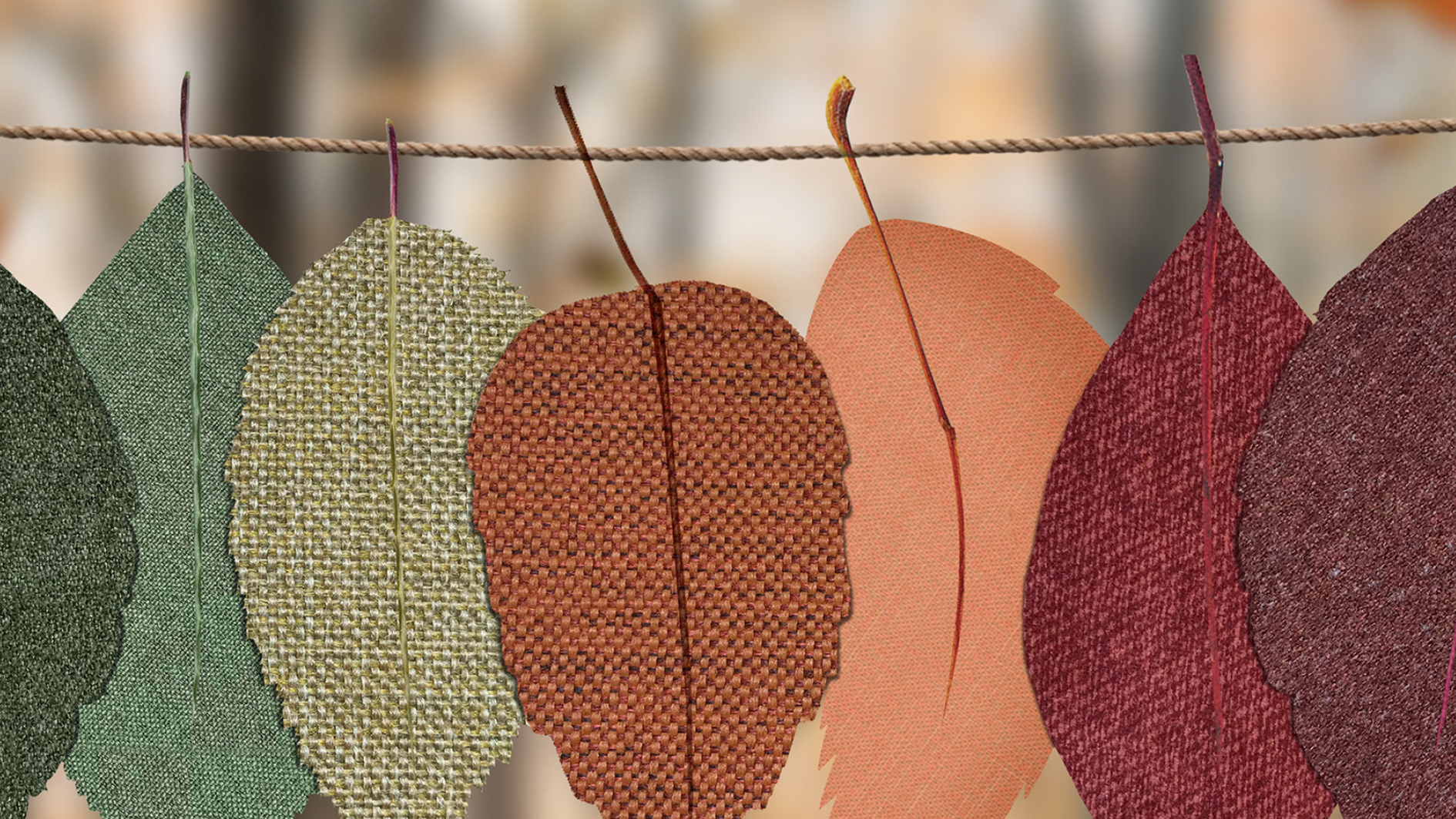
Discussion
One could collect leaves, seashells, stones, napkins, marbles, dolls, or even… words. Do you, parents, also have similar collections, or had them when you were younger? You are more than welcome to tell your child about them, and invite them to take a look around them to see what else they could collect. You could start working on a brand new, joint collection right now!

My treasures
A tin box, kettle, crate or shoebox could each become a home for beloved items. You could decorate your container of choice with newspaper cuttings, buttons, leaves, seashells, colorful sand, or any other suitable material that you may find at home or outdoors. Are you done? Is your container ready? Now’s the time to fill it up with treasures.

Looking for similarities
One leaf looks like a feather, some stones look like eggs, and what shape is a pinecone? You may enjoy collecting leaves, stones, pinecones, or anything else you find around you, and… play: Take turns picking an item, and having the other players name objects to which it is similar.

What's new around you?
What’s new in your surroundings? Perhaps you could go outside and take a fresh look at the environment: Which animals will you come across? What colors and shapes are the leaves? What is happening up above in the sky, or down below on the ground? You may enjoy creating your own path, take a walk on it from time to time, and check what has remained the same, and what has changed.

Pinterest – Arts & crafts using leaves, treasures and collections are waiting for you on the Julia and the Leaves page on the PJLibrary Pinterest.ּ
Discussing
“But Robin doesn’t care, she likes sitting on her own like that”: Do you think Robin is really alone? What do you do when you’re on your own? Where do you like to spend your alone time? You may enjoy taking a stroll through the book, and discussing the experiences Robin undergoes when she’s in the tree’s company. Which of Robin’s experiences did you like best?
Illustrations, color, and creativity
This book is rich in color and details that change with each season. You may want to suggest that your child look through the pages, and search for various items: leaves, clouds, fruit, or animals. Perhaps your child can look for the main colors in each page – a red or green page – and draw pictures that are inspired by the book’s illustrations: a green drawing, a yellow one, or a rainbow-colored one.
A game called "What's my Secret?"
How good are you at guessing secrets? You may enjoy playing the following guessing game: Each player in turn picks a “secret” according to a pre-determined topic, such as animals, books, or something found in nature. The other participants must guess what the “secret” is by asking “yes or no” questions.
Environment – Adopting a tree
How about going outside and looking for a tree close to home? What does it look like? What color are its leaves? Perhaps the tree is bare, and has none? Is it bearing fruit? If so, careful! Not all fruit are edible. You could stroke the tree trunk, and notice the birds and other animals nearby. You may want to visit it from time to time to see whether and how it changes throughout the year. With Robin as your inspiration – can you think of a gift that you would want to give your adopted tree?

Discussing – Doing things on my own
“He who sowed sorrowfully, now reaps joyously” – the children in this book enjoy working hard and being independent. Do you, children and parents, enjoy working and creating yourselves? What kind of work do you enjoy doing together with friends or family members, such as your grandparents? And what do you enjoy doing all on your own?
You may want to think together about the kind of work that you find hard, but also rewarding.

Simple pleasures
There are simple, everyday pleasures like drinking lemonade together, smelling a fragrant flower, or listening to a story. You may enjoy making a family collection of pleasures together: draw moments of joy on notes, and post them up in a central area of your house. You could “pick” a note each day, plucking it off the wall, and taking a moment to share some simple joy together.

Playing a fragrant game
This book mentions many scents – lemons, herbs, and roses – that may inspire you to play the following aroma quiz: pick some fragrant items (soap, a vanilla bean, mint leaves, orange zest, etc.) and start playing. Take turns closing your eyes, smelling one of the items given to you, and trying to guess what it is. Can you guess by using your sense of smell alone? You could allow participants to use their sense of touch too. When the game is over, you could place the fragrant items in a small basket, and smell them in moments of simple pleasure.

Growing joyously
You may want to take a walk near your home to look for fruit trees, flowers, or herbs. You could try growing some herbs in your garden or a planter – mint, tree wormwood, sage, or lemongrass. This could be the perfect opportunity to give your child a job – being responsible for watering the plants – so that when the time comes, they will be able to pick them joyously, and use them with pleasure!
Reading together, experiencing together
This book allows toddlers to take an active part in its reading, for each page ends with an intriguing question, to be answered on the following page. You may enjoy allowing your toddler to turn the pages and find the answer.
Going outside
The Pear is Extra Sweet invites readers to go outside and discover the wonders of the world close to their homes: you could rest under a tree in your neighborhood, have a snack there, and play with fallen leaves. Perhaps you would enjoy taking this opportunity to introduce your toddler to magnifying glasses: look through the magnifying lens, and see what the world looks like close up.
What happens at nightfall?
Various items found in our immediate surroundings are shown on the final page of the book. You may want to examine what the back yard holds with your toddler, and where in the book each item is found. You could even use the final page to recall your day together, and sum it up with your toddler: where were you today? Who did you meet, and what did you do?
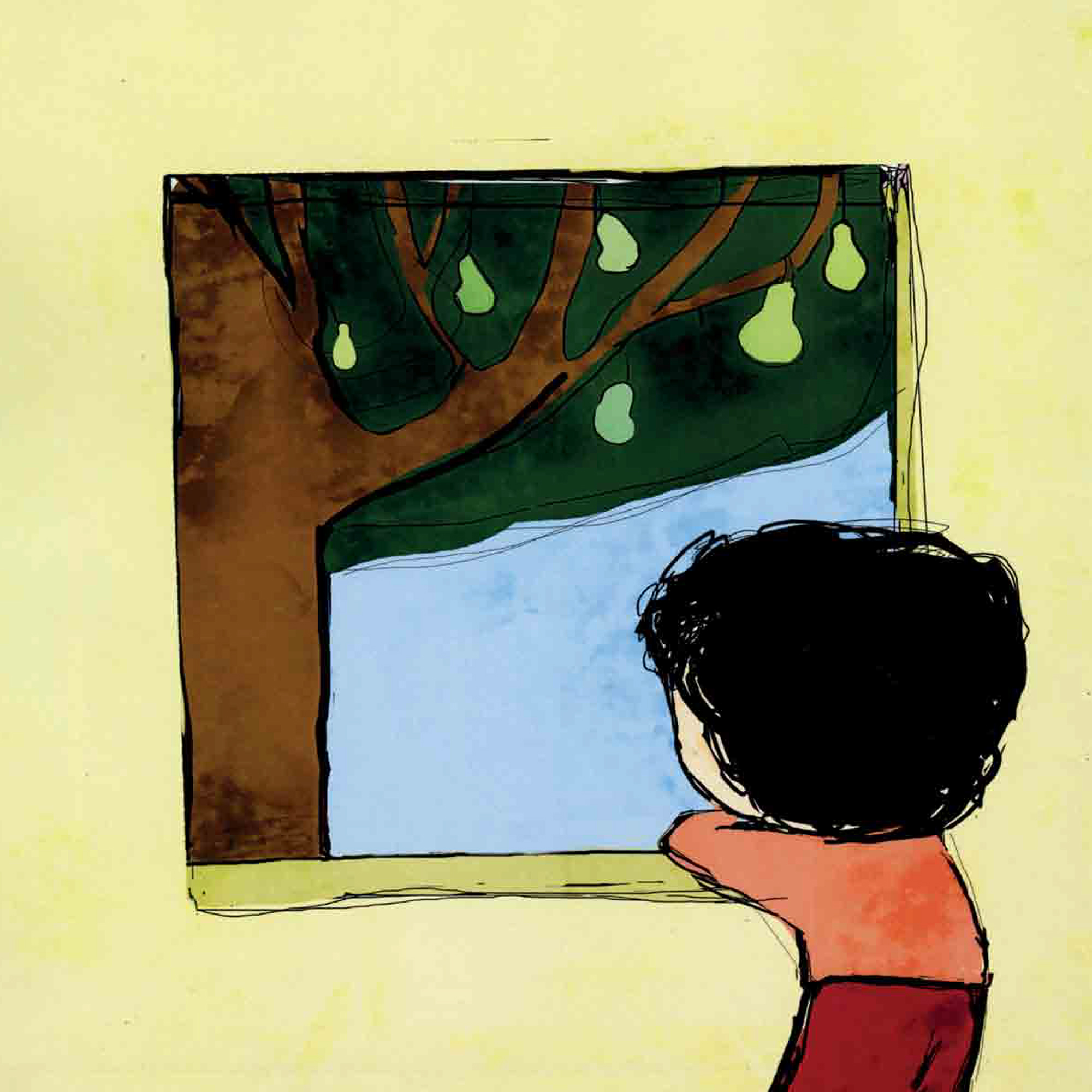
The puddle-boat game
Even if it isn’t raining, you could create a small puddle in the back yard or in a large bowl, sail paper boats on it, feel how wet the water is, and add fallen leaves and branches into it. Wondering how to make a paper boat? Log onto the book’s webpage or the PJLibrary Pinterest page for easy paper boat making suggestions.
What do you see out of your window?
You may enjoy looking out of your window together to see what moves and what remains static. Can you hear any sounds? Have you discovered anything surprising? Perhaps you would like to look out of your window during the day, and again in the evening, after nightfall. Did you discover different things by day and by night?
Proposed Family Activities:
- You may want to ask your child to leaf through the book and look at the illustrations. You could ask them what the sparrows are doing on each page, how they travel to their aunt, and where each of them falls asleep at night.
- Perhaps you could play the following game: take turns pointing at an illustration, while the other attempts to mimic the sparrow depicted.
- You will find many new words in this book! It may be fun to repeat the verbs used to describe the sweet sparrows’ actions. Does your child recognize the names of the musical instruments and modes of transportation?
- Do sweet sparrows fly in the vicinity of your home too? You may enjoy going for a walk around the neighborhood, looking up at the skies, and searching for birds. Can you hear them tweet too?
- Every member of the family can chip in and help run the family home. Many children find joy in the performance of simple tasks. You may want to ask them to set the table for dinner, help clear the plates away when it is over, put away their toys, and more.
- Does your child know the song Hineh mah tov uma naim? Perhaps you could sing and dance together. Or how about setting up a family band with home-made musical instruments? A rattle made of a jar full of dried beans, a guitar made of a shoebox and some elastic bands, and drums made of pots with wooden spoons for sticks will make for a fabulous family performance!
Ayin Hillel (1926–1990)
Ayin Hill (Hillel Omer) was born in Kibbutz Mishmar HaEmek in 1926. An author, poet, and landscape architect, Ayin Hillel often incorporated nature, landscapes, and animals into his poems. Many generations of Israeli children were raised on his literary gems, such as the Uncle Simcha stories, Why does the Zebra Wear Pajamas?, Yossi, Smart Child of Mine, and many others. Ayin Hillel also wrote poetry and prose for adults. He won many awards for his work, and passed away in 1990.
Proposed Family Activities:
- Rabbit’s tail appears in every illustration, but Rabbit cannot find it. You may want to ask your child to leaf through the book, and locate the tail on each page.
- You could attach a kerchief to the back of your child’s pants, and go searching for their tail around the house: Where is that tail hiding? Perhaps you could follow the route described in the book: under the bed, inside the shoes, under the pillow, in the kitchen, then the bathroom, and finally sit down. Like the rabbit in the story, your child can leap for joy when their lost tail is finally found.
- Can your child name their body parts? You may enjoy playing a game in which you ask your child: Where’s your elbow? Where’s your knee? Where’s your big toe? And have them point to each body part in turn.
- Rabbit looks in the bathroom and catches his reflection in the mirror. You may also want to stand in front of the mirror with your child, name one of the emotions felt by Rabbit throughout the book, and make the corresponding facial expression: smile to show joy, make a concerned face, get excited, and so on.
- Who has a tail? Perhaps you could take out some stuffed animals or look through a picture-book to discover what other animal has a tail. Which has long ears? What other animal can leap and jump?
delicious carrot cake
- What does Rabbit like to eat? Carrots, of course! How about making a delicious carrot cake together?
Ingredients:
2 eggs
½ a cup of sugar
1/3 cup of oil
2 medium-sized carrots, grated
1 cup self-raising flour (or 1 cup of white flour mixed with a teaspoon of baking powder)
½ a teaspoon of baking soda
1 flat teaspoon of cinnamon
Method:
- Preheat the oven to 180 degrees
- Mix all the ingredients in the order in which they appear
- Put the batter in an oiled baking pan, and bake for 20-25 minutes. Insert a toothpick into the cake, and when it comes out dry, the cake is ready
- Sit in the kitchen, eat the cake together, hug each other, and enjoy
Datia Ben Dor
Born in Alexandria, Egypt in 1944, and immigrated to Israel when she was a year old. During her early professional career, Ben Dor engaged in musical education, writing screenplays and songs for many TV shows for preschoolers, such as Parpar Nechmad (Lovely Butterfly) and the Israeli version of Sesame Street. Many of her children’s songs and books are very well-known and loved, among them: Ani Tamid Nishar Ani (Me is Me), Digdugim (Tickles), Otiyot Mefatpetot (Chatty Alphabet), and Kacha Zeh BeIvrit (That’s How Hebrew Is). Datia Ben Dor won awards for her contribution to children’s literature, such as the ACUM Award and Bialik Prize for Lifetime Achievement in Children’s Literature.
Proposed Family Activities:
- The child in this book asks the tree what it is like to be a tree. It may be interesting to discover your own child’s answer to the question: What is it like to be a child? What makes you special, and what makes you happy?
- Itay Bekin, the illustrator, added details that are not explicitly mentioned in the text of the story. Can your child identify all that is found underground, by the tree’s roots? Who makes frequent appearances in the illustrations, flying around throughout the book?
- The tree is happy to be rooted to a single spot, hear the birds chirping, and feel the dew falling. Perhaps you would enjoy playing “kind eye” with your child – look out the window together, look for good things, and share them with each other. You can then look inside the house, and continue playing by taking turns to tell each other what is good about your home and family, and what it is you like about them.
- You could go tree-spotting near your home. Try to notice which trees are growing in your area: Are they decorative or fruit-bearing? How can you tell whether they are young or old? Perhaps you could pack this book, a blanket and some refreshments, and read the story together in nature, under your favorite tree.
- Trees are very useful to us. You may enjoy walking through your home and looking for everything that is made from trees (wood) or their fruit. For instance: some of your furniture may be made of various kinds of wood; paper is made of wood shavings, as are books; olive oil is used for cooking and candle-lighting; wine and raisins come from grapes that grow on vines, and so on.
- Datia Ben Dor has written many well-loved stories and poems. You may want to look for them at home or the local library, and read them together.
Proposed Family Activities:
- You may want to leaf through the book together, and look at the special illustrations. Perhaps you could ask your child to notice the different perspectives and angles from which the illustrator chose to draw Mooha and Booha: up close and from afar, from down below or high above, from the front and back. You may enjoy picking an object at home, and trying to draw or photograph it from various angles.
- How about acting the story out together using puppets? You could suggest that your child try to convince the cows to stop bickering, and enjoy their grass.
- It is often difficult to admit that we are jealous of others. Perhaps you could share an incident with your child in which you were jealous of someone else when you were growing up, and how you coped with that feeling.
- Mooha and Booha cannot enjoy their own grass, because they focus solely on what the other has. You may want to toss a ball between you, and have each of you say something good that makes them happy as you take turns catching the ball.
- Seasons change, the green grass turns yellow, and the cows cannot stop fighting. Perhaps you could make a “grass head” using old stockings, some soil, and grass seeds. Take care of the grass head together, and discover how long it takes for the grass to grow at its top.
Proposed Family Activities:
- How about packing this book along with some refreshments and a blanket, finding a beloved tree in nature, and reading the story there together. Afterwards, you may enjoy collecting pine cones, tree bark, leaves, and more. When you return home, you can use them to make a piece of artwork together.
- You may want to snuggle up and look at the magnificent illustrations closely. Can your child identify some familiar trees by their illustration?
- After you finish reading the story, you may want to ask your child what they think Giora will do now, and what will happen to the trees. Perhaps you would enjoy writing up a creative follow-up to the story told, and illustrating it.
- Baobab, loquat, Tamarisk, Pecan… Giora knows every tree by name. what kinds of trees grow near your home? How can you identify them? How can you tell them apart? You may want to take go tree-spotting together, learn about the trees you see, and make an illustrated tree guide together.
- How about taking a walk near your home? Are there any open spaces or dilapidated courtyards nearby? Perhaps you and some friends could clean them up, and make them look nicer. You could even plant a community garden with your neighbors.
- Do you know any other stories or poems about trees (like Zuta and the Apple Tree by Orit Raz, What’s it like to be a Tree? By Datia Ben Dor, The Abba Tree by Devora Busheri, What Does it Take by Gianni Rodari)? You may want to look for them at home or in the library, and read them together.
This is the last book your child will receive from PJ Library this year. We hope you have enjoyed reading, discussing, and doing the activities together. We wish you a summer full of wonderful experiences and story times. See you next year!
Proposed Family Activities:
- You may want to leaf through the book together, enjoy the colorful illustrations, and look for the various animals. Can your child name them all? Have you noticed who waits for the animals on the final page? You may enjoy making different animal sounds each time, and asking your child to look for its illustration in the book.
- Once you have read the story over several times, your child may be able to answer questions such as “how does a dove coo?”, or “how does a duck quack?”. You may also want to play a game: you could each make an animal sound, and ask the other to name the animal.
- Perhaps you would like to make simple puppets with which to act out the story. Take some old socks, stuff them with cotton wool, sew on a button for a nose, draw a pair of ears and eyes, and make any animal puppet you like – your very own mouse, snake, or turtle.
- You could play with stuffed or plastic animals, arranging them in pairs in a long line. Perhaps an old shoebox can be turned into Noah’s ark, sheltering the animals from the oncoming storm.
- Does your child also like to hold your hand when you’re out on the street together? How about this novel way of walking hand in hand: let your child place their feet on yours, now hold their hands, and walk together.
Proposed Family Activities:
- You may want to suggest that your child leaf through the book. What is Oren holding upon returning from his walk with his father? Which toys did the children bring the turtle? You could also look for Oren in the illustrations throughout the book. In which of them does he seem happy, and in which does he look sad? Can you explain why?
- Perhaps you would enjoy taking a short walk near your home. You could take turns looking up, down, to your right, and to your left, and announcing what you see. For instance: “I see an ant!”, or “I see a pinecone!”. Do you notice the same things?
- Does your child know what every animal likes to eat? And where it lives? You may want to discuss the right way to treat animals with your child. Together, you can think which animals can be suitable pets, and how to care for them. Even small children can take part in caring for a household pet.
- You may want to make a turtle shell using a pinecone, a disposable plate, or a finished toilet paper roll. Attach four legs and a head made of cardboard to it, paint it, and have fun owning a pet turtle! You can also use it to act this story out.
- At the end of the book, Oren wishes for his mother to find the turtle again. Together, you could write a sequel to this story. What do you think happened? Where did the turtle go? Did Oren run into it again while taking a walk in the woods? Do you think the turtle remembered him? Did they become friends?
Mira Meir 1932–2016
Mira Meir was born in Lodz, Poland, and relocated to Tel Aviv at the age of 5 along with her family. After completing her military service, she moved to Kibbutz Nahshon. Meir was an author and poet who wrote for both adults and children, and engaged in editing and translating as well. She won many awards for her literary work, including the Zeev Prize for Lifelong Achievement, the Minister of Culture Award, and the Hebrew Authors’ Prize. Among her well-loved children’s prose and poetry books are: Shluly [Puddley]; Maʹaseh She-Haya Kah Haya [Once Upon a Time]; and Paʹam Haya Yeled Shelo Ratzah Lishon Levado [The Boy Who Wouldn’t Sleep Alone].
Ora Ayal 1946–2011
Ora Ayal wrote and illustrated more than 70 children’s books. She illustrated many books written by top Israeli children’s authors, such as Miriam Roth (Tale of Five Balloons [Maʹase Ba-Chamisha Balonim], Hot Corn [Tiras Ham], and Yael’s House [HaBayit Shel Yael]), David Grossman (the book series on Itamar), and Ronit Haham (Five Witches Went for a Walk [Hamesh Mekhashefot Halkhu Letayel]). Among the books Ora Ayal both wrote and illustrated are: One Tuesday Morning [Boker Bahir Ehad]; Ugbu; and The Great War [HaMilhama HaAdira]. Her well-loved books have been a source of delight for Israeli children, and she has won many awards, among them the Andersen Children’s Literature Award, and the Ben-Yitzhak Award.
Proposed Family Activities:
- You may want to read this story several times, and look at the special illustrations together. You could ask your child: how can you tell from the illustration that Guy is not feeling well? How does each member of his family try to help him get better? You could search for pictures of Yoyo the dog, and ask what it is doing on each page. Perhaps your child could tell you the story in their own words according to the illustrations.
- Mom, Dad, Grandma, Grandpa and Yoyo try to cheer Guy up and make him happy. Each of them does what they can and think is best for him. You may want to share a memory with your child of a time when you had gone to visit a sick person, or a time when you were sick and received a heartwarming visit.
- Often children are unable to visit the sick, but they can still help them recover, and cheer them up. Do you happen to know anyone who is unwell? You could encourage your child to draw a greeting card for them, call them up, or make something yummy for them, to try and help them get well.
- Perhaps you would enjoy opening a “toy clinic” at home in which to treat your dolls and stuffed animals. You could also play together: you could be the patient, and your child could pretend to be your doctor, or vice versa.
- Grandpa makes sweet, hot tea for Guy. You can also make delicious herbal tea, if you like, to warm up your entire family: place some herbs in a teapot (mint, rosemary, lemongrass or sage), pour boiling water over them, and sweeten the hot beverage. Enjoy!
Proposed Family Activities:
- You may enjoy looking at the amusing illustrations together: does the cat really seem not to be nice? Is something bothering it? When is it happy and content? Look through the book and make up new stories about the illustrated cats.
- Which pets do you prefer, cats or dogs? Perhaps you like both. Do you think the author of this book likes cats? Now that he has shared his positive judgement of them with his readers, do you think he likes them more?
- Perhaps you could go for a cat walk in the neighborhood together. Every time you come across a cat, try to guess how it feels, and make up a story about it. When you return, you could ask your child to make an illustrated book entitled Why our Neighborhood Cats are Nice.
- You may enjoy playing the “kind eye” game together: take turns throwing a ball of yarn to each other. Whoever catches the ball has to say something kind – a good quality or kind gesture – about the one who threw it. Try passing the ball around as many times as possible, until the room is filled with positive judgment, compliments, and love.
- How can we be nice to cats? Perhaps you could take an empty crate, line it with old fabric, and create a shelter from the sun and rain for stray cats.
Magic drawings.
Magic drawings. It is not always easy to start drawing on a blank page. You may enjoy making magic drawings with your child: use different crayons to color an entire white sheet of paper in various colors, then add another layer of black crayon on top of it. Now, using a coin or bamboo skewer, draw anything you like on the black coat of paint, and whatever you draw will come out multicolored.
Adding good.
Adding good. What is missing from the world around you? You could take a look around your home with your child, or around your street, kindergarten, neighbors’ and friends’ houses: what could you do to make the world a better place? Perhaps you could decide to decorate the garbage can in your building together, help a neighbor with a task they find difficult, or simply try to use words like “thankyou” and “please” more often, and smile at the people you meet.
Rhyming and rhymes.
Rhyming and rhymes. Your child could actively participate in the reading experience with the help of the rhymes. In time, they may even be able to “read” the book on their own. Do you like wordplay? You may enjoy making up some rhymes of your own.
Color hunting
Color hunting. The world is filled with color, and you may want to take a walk around the neighborhood to discover them. Take a white sheet of paper along with you, and some crayons, and go hunt colors. Each time you spot something, draw a circle of the same color on your sheet of paper: for blue skies, draw a blue circle; for a red road sign, draw a red circle; and so on. At the end of your walk, you will have a beautiful, colorful sheet of paper.
Drawing together.
Drawing together. You could also take a blank sheet of paper and some crayons, and make a joint drawing: parents start out by drawing a line, dot, or patch of color, and their child adds another detail, followed by the parent, and so on. By the end of this exercise, you will get a shared drawing to which each of you has contributed their share.
I have created a critter
“I have created a critter”. In the world created by Paul Kor there are purple waves, pink stars, and imaginary critters. You could also create imaginary creatures with your child using playdough or clay. You may want to decide what color your critter will be together, how many eyes it will have, and what it will be capable of doing.
Proposed Family Activities:
- You may enjoy looking at the illustrations together. The bee appears on every page (sometimes it is hidden). You could try to follow it, and tell the story from her perspective. Can you identify the various gifts that the Queen of Sheba brings King Solomon? What kinds of gifts can one bring a king? Does he need them?
- You may want to look for the illustration in which King Solomon lets the bee go. Perhaps you could ask your child: Why is he laughing? Does he truly believe a small bee could ever help him?
- You could pretend to be bees yourselves. Let your child be the bee, and pretend to be its fellow bee. Fly together and buzz to one another – your child will tell you all about the bee’s encounter with the king, and you can react to the story.
- “Wise is he who learns from all men”: you may want to ask your child what makes one wise, what wisdom is, and what King Solomon learned from the little bee. Perhaps you could tell your child something they did not know, and ask them to enlighten you with their knowledge!
- Perhaps you could discuss the skills and contributions made by each member of your family. Together, try to remember times when your child was particularly helpful. Even the youngest members have their “hour”, in which they help and contribute to the greater good.
- The Queen of Sheba came to Jerusalem to ask King Solomon riddles and test his wisdom. Do you know any riddles? You can put them to your child, or invent some new ones together.
- This story is based on a tale about King Solomon, “the wisest man who ever lived”. Do you know any other stories about King Solomon? Perhaps you could share them with your child.
Proposed Family Activities:
- You may like to sit together, read the story out loud, and look at all the illustrations. Perhaps you could stop reading when Dad comes home with the box, and see if your child can guess what is moving around inside it.
- The illustrator has hidden many animals in the illustrations. Some of them are real, others are toys. You may enjoy looking through the book, and searching for the animals on each page. Have you found the green creature with the antennae? What is it doing on Dad’s hand? And what happens to it when the little boy meets Pumpkin the Kitten?
- Using an old sock, some leftover fabric and buttons, you could make a hand puppet in the shape of a cat together, and act the story out. How would you name your puppet? Is it fun to pet? What kind of sound does it make?
- Perhaps you would enjoy going for a walk in your neighborhood in search of cats. It is best not to go too near them, or try to pet them, if they are not domesticated, but you could help them a little. An empty box and some old fabrics could serve as a shelter for street cats, so they can stay warm and dry on cold nights and rainy days.
- Which animals do you like? Is there an animal that your child does not like, or that scares them? You may want to visit the zoo, or a local pet store, and see this animal from up close. You too might find that a close encounter with the animal will make you change your mind about it.
Reading the illustrations
You may want to look at the graceful illustrations together. You could stop on each page, and look for amusing details. Have you found the drawing hen, egg-laying boy, and tower-building bee? What else about the illustrations was funny?
Everyone goes to kindergarten
What do you see on your way to kindergarten? Do you, like the child in the story, see a grocery store, a dog, a baby in a carriage, or a café? Does a pink car pass you by? You may want to draw the route to kindergarten together, adding details about the places and people you encounter on your way.
Acting the story out
You could act the story out using puppets and stuffed animals. Ask one another: “Would you like to change places? It’ll be such fun!” Perhaps you could add other animals and characters who want to go to kindergarten too.
What day is it today?
The boy in the story meets a different animal each day. Does your child know the days of the week? Do you have fixed plans, like afternoon classes or other activities on certain days? Or a shorter day on Friday? And what do you do on Shabbat, when you do not go to kindergarten? You may enjoy making a chart representing the days of the week, and drawing your daily activities under each day.
Thank G-d it's Friday
On the final page of the book, the children and animals perform the Friday Night ritual known as Kabbalat Shabbat. How is Shabbat marked in your child’s kindergarten? You may enjoy having your own Kabbalat Shabbat ceremony at home, and sing Shabbat songs, just as they do in kindergarten.
Kindergarten is the best
Sometimes it is hard to get up and go to kindergarten in the morning. Is your child always happy to go to kindergarten? After reading this story, you may find a game to make getting ready easier in the mornings, and help your child go to kindergarten with a smile on their face.
Proposed Family Activities
- Have you noticed the special combination of words and illustrations in this book? Was it easily read aloud? What about the illustrations and plot did you find amusing?
- You may enjoy searching together for the page on which Henry puts up the wanted poster for the perfect pet. What other ads can you see up there? Do these products really exist? Perhaps you would like make an ad of your own with your child, seeking something they greatly desire, even if it only imaginary.
- A dog cannot quack, and a duck cannot play catch. But if you look upon things with kindness, you can always find the good in them. You may want to make note of the unique talent each of your family members and friends possess.
- Henry knows a lot about the characteristics of frogs, dogs – and ducks! What animals does your child know? You may want to visit a farm, zoo or pet store, and get to know new animals.
- You could share a childhood experience with your child: which animals lived nearby? Did you own a pet when you were a child? If so, you could tell them about it, and show them pictures from your past.
- Perhaps you would enjoy having a costume night at home. Each of you can dress up as a different animal, and the others could guess which animal they are. You could even invent imaginary animals, mixing a horse’s tail with cat’s ears and so on. What would you name the animals you have invented, and what would their characteristics be?
Proposed Family Activities
- You may want to look at the special illustrations by Gilad Soffer The book looks a little like a comic strip. How easily did you read it out loud? Did you notice that the word “Shafan” on the front cover was struck through? You could perhaps discuss this line across the word. Was it a printing error?
- Comic books are for readers of all ages! They describe the plot in words and illustrations, forming a sophisticated technique that adds another level of meaning to the written words of the story. You may enjoy picking a well-known story, or make up your own, and create a comic book out of it together using speech bubbles. You could take a look at the parts of the book that are so illustrated, and discover what facial expressions, body language, and the use of colors tell us that we couldn’t have known just by reading the words. Notice, for instance, how content the magician looks, compared to the upset look on the rabbit’s face.
- Have you ever been mistaken for someone else? How did you feel? Perhaps you would like to share your thoughts, and think together what we could do to ensure others call us by our real names.
- This book is full of humor, and appeals to readers of all ages. Did both you and your child find the same parts amusing?
- Can you differentiate between a rabbit and hyrax? An eagle and vulture? An ostrich and emeu? You may want to make a “confusing animal dictionary” in which you write and draw the animals whose names we tend to confuse. During your next visit to the zoo, you’ll be sure to get them right. You could also make a card game, with pictures and names of animals that need to be matched.
- You may also enjoy making a hyrax and rabbit out of playdough, and use them to act the story out.
- Perhaps you could look for illustrated books at home or in the library that mention hyraxes or rabbits, and check whether the illustrators drew them accurately, or got confused.
- You may also want to discuss the rabbit’s feelings throughout the book. Why is he so offended at being called “shafan”? And why do you think he remains unhappy all the way to the end of the book?
Family reading tips
Adrianus (Hadrian) was a Roman emperor from 117 to 138. The Roman empire thrived under his reign. Adrianus suppressed the Bar Kokhba revolt and enacted regulations against the Jewish people. In the Talmudic legends (Midrashim) he is described as a wise and well-educated emperor, but also as being cruel. He is often cited as the main cause of the destruction of Judea.
Basket full of gifts
Special gifts are passed through generations: a family story, a tasty recipe or a unique holiday tradition. What important gift did you receive from your parents, grandparents or other family members?

Past to future
Take a look around the house: What items can you find that were made in the past? Can you find things that were created recently which can be used by future generations? Maybe a new building being built, a playground, a school or a grove?

Make a family album
The old man in the story left figs for future generations, and we are left with the story. Why not create a family album with family photos and stories. You can add photos from trips or special occasions, and share stories of things you experienced.

Find more arts and craft projects, songs and other activities on Sifriyat Sifriyat Pijama Library’s Pinterest page.
Who dressed up as whom?
You may want to look at the illustrations together, and look for the disguised animals mentioned in the story. Can your child recognize them all? Who, in your opinion, has the best costume? To whom would you have awarded the prize?
A stuffed animal masquerade
Make costumes and masks for your stuffed toys, set a table with fine food, and sing Purim songs together. Who will win the costume competition, and what will the jackpot be?
Competition and fair play
You may want to stop reading for a moment at the point where the animals argue, each one thinking it had the best costume, and ask your child to describe the decision-making process for which they would have opted. You could use this book as a platform for discussing achievements, competition, and the feelings associated with winning and losing.
The crafty fox
You may want to discuss the fox’s behavior with your child. Did he deserve to win the costume competition? The fox is portrayed as cunning in many stories. Do you know any other books on foxes, such as The Fox and the Grapes, The Chickens and the Fox, or Fox Fables? You could search for them and read them together.
Purim of the past
Do you remember a special childhood costume? You may enjoy sharing childhood experiences related to Purim and dressing up with your child. You could also look at family photo albums, and be reminded of parents’, siblings’, and children’s past costumes.
Oded Burla
is the author and illustrator of many children’s books, among them: A Smile on every Corner, The Melody, and Oded Burla’s Big Book. You may want to look for more of his books at the library, and enjoy them together.
Tickling our imagination
Imagine how Iddo must have felt when the ladybird tickled his hand, and how the little ladybird felt. You may want to ask your child to hold their hand out like a small bowl, and tickle it. You can pretend the ladybird is strolling across their belly, and pleasantly tickle one another.
Hiding out from the rain
The ladybird found shelter in Iddo’s hand. You may want to discuss ways of hiding out from the rain with your child. You could search for umbrellas at home, woolly hats, or any other object used to protect us from the rain. You could also step outside and point to buildings, bus stations, and stores on your way to kindergarten. Can they, too, provide some shelter from the rain?
What did the ant say?
You may want to look at the illustrations together and look through the book for the ladybird’s encounters with each of the other animals: the ants, spider, and cat. Perhaps you could ask your child to tell the story in their own words, and discuss the difference between Iddo’s reaction, and the other animals’ responses.
What do ladybirds do?
Perhaps you would enjoy stepping out to the park or playground, and look for ladybirds (ladybugs). Will you find one among the leaves, or in the sandbox, just like Iddo did in the book? You could place it gently on your hand. Does it tickle? Does it rest, or immediately spread its wings and fly off? It is of course very important to return the ladybirds to nature.
חיפושיות Little stone ladybirdsמאבנים קטנות
You may enjoy collecting smooth, round stones of various sizes, painting them red, and, once the paint dries, marking a black line across them from top to bottom, and adding white spots. And there you have it – a ladybird family!
Proposed Family Activities:
- You may want to join Noga and her father by acting the story out. Every time Noga meets an animal, you could do as she does: spread out your wings like a butterfly, crawl like a tortoise, or roar like a lion.
- Guess who: you could play charades, mimicking an animal, and letting the other guess which one you are.
- Reading the illustrations: you may want to suggest that your child leaf through the book and tell you the story by the order of the illustrations.
- Do you drive to kindergarten together, or walk? What do you see on your way? Who or what do you come across? Perhaps you might like to pay attention to flowers, trees, buildings, or even find large and small animals.
- Do you also have a game that helps you pass the time enjoyably on your way to kindergarten?
Here is a list of ideas for games you can play on your way:
- Parent hums a tune and child tries to guess it and sing along.
- You could decide what to look for on your way (certain color cars, a cat, bird, or police car).
- You’re welcome to gallop, skip, or jump all the way to your kindergarten gate.
- Perhaps you would like to pick a certain mode of transportation (airplane, tractor, motorbike), and parent can put child on their shoulders and pretend to get to kindergarten on it.
- You could play a memory game to familiarize yourselves with the route: what will we be seeing next? A store, a tall building, a tree, and so on.
- You could collect something on your way, such as special shaped leaves or rocks.
Family Activities
“… the tiger understood that a smile would appear on his face each time he felt happy”
Take your child for a walk outdoors and enjoy the nature that surrounds you. Like the tiger, you too can play with crushed leaves, listen to birds chirping and climb up hills.
What makes you and your child smile? You can play “the smiling game” together: Pass a ball between you. Each time one of you tosses or rolls the ball to the other, mention something that makes you happy. Don’t forget to smile throughout the game!
Where is our child and his or her smile? You can play hide-and-go-seek throughout the house, looking for each other’s smile.
The tiger looked into a puddle and discovered his smile right under his nose. In our homes we don’t have puddles but we do have mirrors! Your child can discover his or her smile in the mirror, and make funny faces at his reflection.
Song and dance are natural ways of expressing our happiness. You can sing and dance with your child, even without a special reason. Think of songs that are especially appropriate, such as “If you’re happy and you know it…”.
At the end of the story the tiger jumps with joy. If the story had continued, he might have even burst into laughter. Do you want to laugh? Here’s a funny way to start: Everyone in the family lies down on the carpet, with one person’s head resting on another’s belly. One member of the family starts to giggle, his or her tummy trembles, and soon you’ll all see how contagious the laughter becomes!
The author and illustrator Katherine Rayner loves the animals she depicts in her books. Our story is accompanied by special drawings. Go through the book with your child, noting how the tiger looks when he has lost his smile, and how he appears when he finds it in the puddle.
“Augustus and his Smile” is the first Sifriyat Pijama book of the year. Reading books together as a family is one way to bring joy and happiness into the home, and can put a smile on everyone’s faces. Enjoy!
Activities You Can Do at Home
- Discuss together the fox’s behavior: do you think it paid off? Was there some other course of action he might have taken, without going hungry and getting so thin — twice?
- Flip through the book and ask your children to tell you the fable using only the pictures as a guide. Pay special attention to the details the illustrator added – for example, what is the fox dreaming about? What other animals appear in the pictures but not in the story?
- The fox really wanted those grapes and was willing to go to tremendous lengths in order to reach them. You might talk with your children about something they might really want, and about what sort of effort they’d be willing to invest to obtain it. Do you know any other fables? The original story appeared in Midrash Kohelet Rabbah, and was included in Haim Nachman Bialik’s Book of Legends, which anthologized hundreds of fables from the Talmud and Midrash. You can find lots more fables and stories of our sages online: in Hebrew at http://agadastories.org , and in English at http://www.chabad.org/library/article_cdo/aid/112670/jewish/Fables-Parables.htm.
- The fox “stars” in many tales and fables. You might discuss with your children the fox’s sly and clever nature. Do you know any other stories featuring a fox (for example, “The Fox and the Chickens” by Haim N. Bialik, or other fox fables)?
- Your children may act out the story using a doll or stuffed animal. When the skit is finished, you can offer both actors and audience bunches of grapes for refreshment!
Activities You Can Do at Home
- Brownstripe envied the other animals in the forest. You might talk with your children about feelings of envy and jealousy, and share your own life experiences with them. Perhaps, when you were a child, you wanted to be like someone else? Do your children sometimes envy others? This is an opportunity to reinforce your children’s unique qualities and to encourage them to remain true to themselves.
- You might talk together about the saying, “Who is rich? One who is happy with his lot.” What does it mean for you? Is everyone in your family happy with what he or she has? What do we, as a family, feel happy about?
- People often say: “May all your wishes come true.” When Brownstripe gives voice to his wish, his wish is realized! You could ask your children if they, too, have wishes, or if they ever wished for something that came true. While the fulfillment of some wishes is not within our power, we can fulfill others. You can play a game together: each one takes a turn and makes a wish out loud. Be sure to focus on wishes that can be fulfilled (for example:” I wish I had a comfortable pillow under my head,” or “I wish I could curl up under a cozy blanket”). It’s natural to want things, and it also feels good to make someone else’s wish come true!
- You can put on a skit based on the story. Create a tail, antlers, wings and fins using fabric and simple props. Your children can pretend to beBrownstripe, who envies the other animals; you, the parents, can play the parts of the other animals. At the end of the show, you can have a great time playing the mother bear who hears and sees Brownstripe through his costumes. Be sure to share a great big “bear hug” as a finale!
- Brownstripe wants to have body parts that aren’t suitable for a bear. Each of our body parts has an important function. Together with your children, you could examine the illustrations throughout the book. Do your children know what the purpose of a lion’s tail is? Why do deer have antlers, and fish have fins? You can also go over our own human body parts and discuss the function of each.
- The book “Brownstripe” is one of many children’s books that deal with the desire to be like someone else – for example, “The Fish that Didn’t Want to Be a Fish” by Paul Kor (in Hebrew), “The Mixed-Up Chameleon” by Eric Carle and “A Color of His
Family Activities
- You may want to look through the book and enjoy the lovely illustrations. Can you spot the apple on every page? Some of the objects and animals remain constant, while others change position. Which are constant? Which are in motion?
- Have you noticed that the mouse is smiling almost throughout the book? How do you think it feels while waiting patiently?
- You may want to take puppets or stuffed animals to represent the characters in the story, and act it out to your family and friends.
- We all lose our patience at times, waiting on line at the cashier, or getting stuck in traffic. You may like to share an experience with your child in which you finally made it after having waited for something for a long time. What ‘gift’ did you get at the end of the long wait?
- Many children find it hard to wait for their parent to finish what they are doing, or for their turn to be on the computer. Perhaps you could mark the time left to wait on an analog clock. Children are often more patient when they know when their “patience time” will be over.
How about putting on your aprons and making apple confit?
Ingredients:
1 kg of green apples
1/2 kg of sugar
1 cinnamon stick
1 lemon
Peel the apples with a peeler, take out the cores and dice them. Cook the apples, sugar and cinnamon stick in a pot on a small burner for one hour (you must be patient!). Once cooked, add some squeezed lemon to your confit.
Be-teavon! Bon Appetit!
Family Activities
- Spend some time together examining Gad Shkedi’s illustrations. Notice the many different animals featured in the illustrations, alongside the trees. Compare the various trees: how many trees are mentioned in the story? Which are fruit trees, and which don’t bear any fruit? Did you notice that the end of the story is toldusing only illustrations? Tell the story in your own words.
- Do you perhaps have a favorite tree in your own yard, or near your home? Does your favorite tree have a “story”? You could take your children on a “tree tour” in your neighborhood. Can you spot any of the trees that appear in the story? Can you identify other types of trees? Compare the various trees you find: what is the benefit of each kind? Which trees are decorative, and which bear fruit? How do we know if a tree is young or old? You might pack this book, a blanket, and a light picnic, and read the story together in some lovely spot outdoors, under a tree. Then (if local environmental regulations allow) you could gather fallen pine-cones, bits of tree bark, leaves, etc., and use them to create a work of art when you get back home.
- In the story, Hannah wants to climb a tree “now,” and her father wants to rest “now.” For many families, this situation is all too familiar. How do you respond when there are conflicting desires in your family? You might discuss things we want immediately vs. things for which we must wait, along with the need to consider others’ wishes and to be patient.
- Trees provide us with an abundance of good things. You could go from room to room in your home and try to identify everything that comes from trees, for example: furniture made out of varying kinds of wood, olive oil that we use in cooking, maple syrup from the sap of the maple tree, wine and raisins harvested from grape vines, and so on.
- Do you know any other stories about trees (for example: the traditional tale of “Honi the Circle-Maker and the Carob Tree,” featured below; the poem “The Tree Man” by Shlomit Cohen-Assif; “Mr. Mini and the Apple Tree” by Orit Raz, or “What Do We Need For…” by Gianni Rodari)? Look for these books at home or at the library, and read them together.
- In Jewish tradition, it is customary to plant a tree to mark important milestones in one’s life. How does your family celebrate or remember important occasions and people? Does your family plant trees to mark a birth and/or other major occasions in your lives?
- Various Jewish source texts compare humans to trees. Talk with your children about your family’s roots, about the” seeds” you are planting for the future, about the different branches of your family, and so on. You might also draw your own family tree, from the grandparents’ generation down to your children’s generation.
- Just like trees, we humans also need a firm foundation in order to grow and flourish. After reading the story, you might have a conversation with your children about the things that matter most to you —your values, deeds, traditions, and beliefs—that strengthen the “foundation” of your family’s tree and support your collective growth.
Have fun reading and discussing this book!
Family Activities
- Stage a family play based on the story. Find simple props at home (sheets and scarves can be used to improvise costumes for Noah and his family; dolls, puppets, and stuffed animals can stand in for the various kinds of animals) and try to imagine the sights, sounds, and smells in the background. Think of ways you could represent the stormy sea, and what might serve as your ark?
- The illustrations that accompany this story add a lot of details that aren’t in the text. Examine the pictures and see if you can identify the different creatures. Can your children name them all? You could divide them up into “family groups” (birds, insects, etc.).What animals do your children know that do not appear in the story? Do your children know how to assign these animals, too, to their “family groups”?
- Noah is concerned about all the creatures on the ark and devotes himself to their care. Talk with your children about the proper way to treat animals, and discuss what “proper care” entails. Take this book with you when you visit a zoo or nature center, and see if you and your children can locate there some of the animals that appear in the book. Some zoos and nature centers let you watch while they feed the animals; others even permit you and your children to participate in the feeding. Do your children know what each type of animal eats, which animals they are allowed to feed, and what food they should be fed? After this visit, you could talk about the differences between domestic pets and wild animals, how we handle animals in captivity, and other related topics.
- “To each his own.” Noah feeds each animal the kind of food that’s appropriate for its species, and he tries very hard to figure out which food will suit the chameleons. Do all the members of your family like to eat the same things? Or do you, like Noah, prepare special foods for different family members, based on individual preferences, allergies, or ages? You could discuss food preferences with your children and see which foods everyone in the family likes, and which are enjoyed only by individual family members.
- Make a model ark out of a shoe box. Ask your children to decorate the model ark as imagination dictates; then put in dolls and either Lego or game pieces to represent Noah, his family, and the various animals.
- This story is based on a Midrash, which in turn was based on the Biblical account of Noah. You could talk about Noah’s character with your children, and retell the story of Noah and the flood. If you know any other Midrashic tales about Noah and the ark, you could share those with your children as well.
Have fun reading and talking about this story!
The Story of Noah and the Chameleon appears in Gemara, Tractate Sanhedrin 108:42
“It is written, ‘After their kinds they went forth from the ark.’ Now, how were you situated?” — He replied. ‘We had much trouble in the ark. The animals which are usually fed by day we fed by day; and those normally fed by night, we fed by night. But my father [Noah] did not know what food the chameleon ate. One day he was sitting and cutting up a pomegranate, when a worm fell out of it, which it [the chameleon] consumed. From then onward, he mashed up bran for it, and when it became wormy, the chameleon devoured it.’
Activities in the Family
- Follow the worm to tell the story: A little worm is hiding in the illustrations on each page of the book. It accompanies the flock of chickens on their journey to find food and watches what happens. Look for the worm. (You may give hints to children who have difficulty in finding it.)
You might want to use your finger as a “puppet” that talks to the worm about what it sees. You can even draw a little face on your finger and “befriend” the worm.
- At the end of the story the chicken and the fox meet. Look at the illustrations that depict their encounter. Notice the facial expressions of the chicken and note what happens to the fox’s tail. Taking an idea from comics, cut out six “conversation balloons”. Using a bit of masking tape attach the “balloons” to the illustrations of the chicken and the fox. Inside each balloon write what the chicken said to the fox and what he answered her. (Parents: Use as little masking tape as possible in order to protect the book.)
- We part from the brave chicken as she watches the fox run away. In the distance you can see the flock of chickens. They still don’t know that their little friend has saved their lives! It would be interesting to imagine what they do when they learn what occurred. You can act out the meeting between the wounded chicken and her friends by putting on a puppet show. You can make the puppets from cloth material, from boxes or from drawings cut out and pasted to wooden sticks. You can even include the “hidden worm” as the narrator of the story.
- It is very difficult for the chicken to walk. She can’t even manage to hold a stalk of grain in her beak like the others. But when the fox threatens her, she turns her weakness into strength. This is her “hour”. Tell or draw a true or imagined story about someone who has his or her shining “hour”, an event that changes them from someone who is weak into someone who is strong.
- The chicken has one weak leg. That’s why she needs the help of a crutch. Do you know a person or an animal that has a physical weakness? Discuss with your children what can help those who have trouble moving, hearing or seeing. Look for such examples in your neighborhood (special parking places designated for the handicapped, sign language for the deaf on news programs, floor numbers in an elevator embossed in Braille, etc.).
There are even special bills of money that are particularly suited for people who have difficultly in seeing. Look at two different bills of money of differing denominations. Close your eyes and feel the bills, and you will discover a protruding sign that helps people with poor vision “read” the bills and differentiate between them.
The chickens' "Exodus from Egypt”:
Throughout the story “The Chickens and the Fox”, Bialik provides hints to stories of our forefathers in the Bible:
The flock of chickens leaves its dwelling place during a year of drought and hunger and arrives at a place where there is food. Once they have satisfied their hunger, the leader gathers them together and asks them to quickly organize themselves for their journey homeward. They are going back to their coop. On their way home a fox lays in wait for them. Like Amalek, he doesn’t dare attack the main group of the flock, but aims instead at the weak straggler at the tail end of the camp.
As opposed to the fierce battle in the desert with Amalek, our chicken succeeds in frightening the fox. She does this by telling him that he who plans to harm the “tail of the camp” will lose his own tail. The fox is alarmed by this and flees, and thus the story ends with the chickens winning the day.
מבשלים פנקייקים עם רות סירקיס!
צפו במתכון המיוחד לפסח של רות סירקיס לפנקייקים! מתאים לכל ימי השנה!
Family Activities
The story of the three butterflies was first published in 1938, and has since accompanied many generations of Israeli children. Do you know of an earlier version of the book containing other illustrations? You may want to take a look together at Orit Bergman’s illustrations. Have you noticed that the butterflies’ wings are multicolored? You may like to consider why the illustrator chose to paint the butterflies this way.
The three butterflies look out for one another and refuse to be separated. You may want to discuss friendship and mutual obligation together, be it between friends or family members. Perhaps you’d like to share stories about your friends and your child’s, and the things you enjoy doing together. Following the story, you might want to ask your child if they or their friend had ever been prevented from joining in a game, how that made them feel and what they did in response.
The flowers are only willing to allow those who are of a similar color in. You may want to compare the illustrations of the flowers to those of the butterflies. What similarities and differences can you find between them? You may like to ask your child what they think of the flowers’ behavior.
You may also want to act the story out as a family by dressing up in the colors of the flowers and butterflies. You could also create a puppet theater, with characters for the butterflies and flowers, using popsicle sticks and cellophane.
You might enjoy going outside and looking for butterflies and flowers! Just like in the story, flowers and butterflies in nature differ from one another, each having their own particular color and shape. Have you come across a tulip or lily? How many types of butterflies have you found, and what color were they? Do you happen to know the name of any butterfly? Perhaps you’d like to mimic the way butterflies move, and invent the Butterfly Dance together.
Levin Kipnis wrote hundreds of well-loved children’s poems and stories that form an integral part of Israeli culture. You may wish to look for them at home, in kindergarten, or at the library, and read them together.
Levin Kipnis
Levin Kipnis was one of Hebrew children’s literature’s founding fathers. He wrote and translated many literary pieces for children, and also set up and managed the first children’s theater in Israel. In addition, Kipnis edited numerous journals, anthologies and text books.
He was born in the Ukraine in 1894 and immigrated to what would later become the State of Israel in 1913. He felt there were not enough holiday songs and stories in Hebrew suitable for young children, and proceeded to collaborate with generations of kindergarten teachers in Israel, compiling preschool curricula and authoring hundreds of children’s stories and poems. Among his songs for the Jewish Holidays are: Svivon Sov Sov Sov (“Spin Spin Spin, Dreidel”) for Hanukkah, Ani Purim (“I am Purim”) for Purim, and Saleinu Al Ktefeinu (“Our Baskets are upon our Shoulders”) for Shavuot. His literary pieces contain messages of helping and consideration of others, such as in the famous Eliezer Vehagezer (“Eliezer and the Carrot”), Hamitriya Hagdola shel Abba (“Daddy’s Big Umbrella”), and… Shloshet Haparparim (“The Three Butterflies”).
Levin Kipnis was a particularly prolific author, and won many awards, including the Israel Prize in 1978, and the Hans Christian Andersen Award in 1988. He passed away in 1990.
How do we read a book that has no words?
Slowly, and with great pleasure! You can look at each page and enjoy the beautiful illustrations. You may want to tell the story in your own words, taking turns, each of you “reading” one page. Perhaps you would like to look for the picture depicting the lion letting the mouse go and think together: why did the lion choose to let it go? Did it know that one day the mouse would come back and help it?
Acting the story out
You may want to act out the story using puppets: use words one time, and another time, use only pantomime.
Continuing the story
After the mouse releases the lion from the net, the mouse returns to its friends. What do you think it will tell them? You may like to make up a conversation between the mouse and its friends, in which the mouse shares its experiences with them. Do you think they’d be surprised? Will they believe it?
"Every man has his hour…"
The story demonstrates the advantage the mouse has, being small and having sharp teeth. Sometimes the larger creature has the advantage, but other times, the smaller does. You may want to think together of things your child can do that you can’t (like crawl under the sofa to retrieve a fallen object, get into narrow spaces etc.)
Drawing a story
The special illustrations in the book combine pencil, colored pencils and water color techniques. You may want to choose a page that you like and draw the picture using the same techniques. You may also like to look for another book you own and draw the story.
Comparing similar stories
This fable reminds us of the tale of King Solomon and the bee. You may wish to compare the two stories.
Do you know any other fables about animals (for example, The Tortoise and the Hare, or The Fox and the Vineyard)? You may find more Jewish tales and fables on the following website: http://agadastories.org.il/. You’re invited to log on and enjoy the different tales together.
Who would have thought that a lion and a mouse could become friends? Following the book, you may want to discuss friendship, compassion and helping others, returning favors and keeping promises.
Family Activities
- You may enjoy looking through Danny Kerman’s illustrations throughout the book together. Can your child tell you the storyline just by looking at the series of illustrations?
- As a young boy, David enjoyed going for walks and getting to know the various creatures, as well as finding out their contribution to the You could go for a walk around the neighborhood with your child, look around and enjoy your surroundings, while asking each other questions such as: how do the trees, flowers, clouds, and creatures we see on the way contribute to our world?
- You may enjoy playing the game called “We need you in the world”: each player in turn names an object or animal, and together all players try to give as many reasons as possible for its necessity in the world.
- Have your children ever seen cobwebs? You could look for them in stairwells, neglected corners, and storage areas. You could also look for the spider, and perhaps even see how it spins its web!
- Using string or wool, you may want to make your own cobweb. In nature, cobwebs are white. What color would you like yours to be?
- This story is based on a tale about David as a young boy, before he became King of Israel. Do you know any other stories about King David? You may want to share them with your child.
Family Activities
• Flip through the pages of the book with your child and look closely at the delightful illustrations by Shimrit Elkanati. Is this how you had envisioned the cats in the poem? You and your child can draw your own cats and make a special family version of the book.
• Using old socks, fabric and buttons, you can make hand puppets to enact the story – once using your own words, and once reciting the rhyming verses of the original poem.
• The poem is set in rhyme and is easy to recite. Your child can try to learn the words by heart and recite it out loud to you.
• Did you ever want to be like someone else? Did you perhaps dream of hair of a different color or more or less curly, or wish to be taller or shorter? After reading the poem, you can dress up in costume and try to experience looking like someone else. After this game, you could discuss with your child the beauty and beloved traits of everyone in your family, and encourage your child to be happy with who they are.
• You can explain the meaning of the saying “May the honor of your friend be as precious to you as your own” and discuss friendship. Who are your friends? Do you argue at times? How do you reconcile? Together you can draw two pictures: one picture showing friends arguing, and the other depicting the reconciliation.
• When the cats in the poem are offended, their fur stands on end and they arch their backs, and they stop talking to one another. You might talk with your children about feeling offended. How can we tell if we offended a friend or family member? What can we do when this happens? And how should we respond if somebody insults or offends us?
• Do your children know any other poems or stories by O. Hillel? The poem “A Tale of Two Cats” also appears in an anthology of his poems by the same name, accompanied by illustrations by Alona Frankel. You might look for the book at home or in the library, compare the illustrations in the two versions and enjoy reading together all the poems in the anthology.
Family Activities
- You may want to look through the book for Little Gorilla and discover where he is hiding in each illustration. Try to imagine what his fur feels like, what he eats, and how big he is. Do you also like Little Gorilla?
- You may enjoy reading the story once more, and replacing the words Little Gorilla with your child’s name. Instead of jungle animals, say the names of your friends and relatives, who all loved your child when s/he was born, and love them still.
- Perhaps you would like to look at family photographs together, and remember what your child looked like when s/he was born. You could tell your child how happy and excited the whole family was when they were born, and share stories of the help extended by friends and relatives, as well as the joy surrounding the new addition to the family.
- It’s great to be big! You may enjoy recalling all the things your child can do today that they could not do when they were “little”, such as walking, talking, reading together, feeding themselves, putting their toys away, etc. When your child helps to clear the table or tidy up the room after playtime, you may want to commend them and say: “It’s great that you’re so big!”.
- Little Gorilla celebrated his birthday in the jungle. You may want to imagine what the animals’ party was like and discuss your thoughts. Did they make him a special cake? Or sing songs? Perhaps you could act out Little Gorilla’s birthday party using stuffed animals.
- It’s nice to liken our love for our children to a plant that always grows. Before bedtime, you could kiss your child and tell them you can’t wait for tomorrow to come, so that they’re a little bigger, and your love for them will grow some more too.
Family Activities
- You may want to read this story several times, pointing out the various animals, the feather, dog leash, and nut. As you read it a second and third time, your child will be able to point at the illustrations instead of you, and know the name of each item depicted.
- You may want to pay attention to the details drawn by author and illustrator Kevin Henkes. Did you notice that the dog, squirrel, fox and bird are all part of the little girl’s good day at the end of the book?
- You may enjoy looking for the picture in which the bird looks for its lost feather. Can your child reveal the feather’s hiding-place?
- You may want to use puppets or stuffed animals and act the story out.
- Perhaps you would enjoy looking at the final illustration and guess how the little girl’s day had begun. Did she also get off to the wrong start?
- At the end of the story, the little girl finds a feather. You could buy synthetic feathers and glue in an arts & crafts store with which to decorate your own colorful bird.
- You may enjoy taking a yellow feather, much like the one the little girl found in the story, curling up with your child and tickling them with it.
Family Activities
- Yoav wants a tail “right here, right NOW”. You may want to point out the larger font and ask your child why they thought this word was bigger than the others. Do you or your child ever want anything RIGHT NOW? Perhaps you would like to discuss desires, wishes and patience together.
- What does Yoav do with his tail? He wags it, tickles with it, waves it and so on. You may want to look through the book and find all the gestures Yoav makes. Perhaps you would like to invite your child to make the same gestures Yoav makes, or invent new ones together.
- Many children like to dress up, and not only on Purim! You may want to make a basket or a box filled with different pieces of fabric, scarves, and maybe even a tail! You could sew a tail as Yoav’s mother did, attach a tail-like belt, or stuff a sock full of pieces of fabric and pin it onto your pants using a safety pin.
- You may want to join Yoav and look for your own tails. You couldn’t find them? Perhaps instead you’ll find your arms, knees, elbows…? There are many ways of getting to know our bodies: through pleasant touch, conversation, song, play and movement.
- Does your child, much like Yoav, like animals? Have they ever wondered what they need a tail for? You may want to look around you and in pictures for animals with various kinds of tails. You could tell your child about the uses animals have for their tails (impressing other animals or threatening them, shooing away flies, helping them keep their balance etc.). The story calls for observing and comparing humans to the animals around us. What similarities are there between them? And what differences?
Do you know the tune to this song?
You can sing it together. You may want to put your fingers together as if you were pinching salt to form duck heads, and use your forearms as their necks.
קישור לשיר
enjoy hiding games
The illustrator, Raaya Karas, developed a search theme in her illustrations. You may wish to flip through the pages of the book with your child and notice where Grandma was looking for the ducks. Just like in the song, you could enjoy hiding games – peekaboo, hiding various objects around the room, and of course – hide-and-seek in or outside the house.
be reminded of more finger-play songs
This is a good opportunity to be reminded of more finger-play songs such as This Little Piggy, Itsy-Bitsy Spider and the Hebrew Grandma made Porridge (Savta Bishla Daysa) and I have Ten Fingers (Esser Etzba’ot Li Yesh). These involve tickling and bouncing on one’s knees. Do you remember the songs you were sung to as a child? Or songs in other languages?
Has your child seen a real duck?
Has your child seen a real duck? When visiting the zoo or looking at picture-books, you may become familiar with various types of ducks, and enjoy comparing them to the illustrations in this book. What makes them similar? What makes them different? What color are they? Are their necks long too?

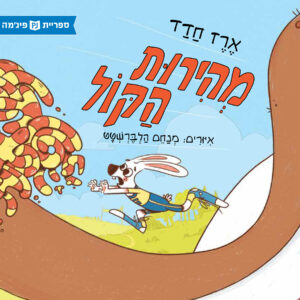 The Speed of Sound
The Speed of Sound 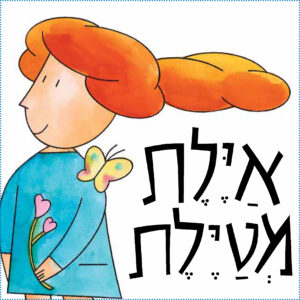 Ayelet Takes a Walk
Ayelet Takes a Walk 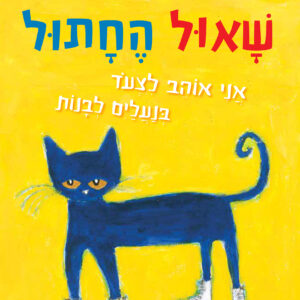 Saul the Cat
Saul the Cat 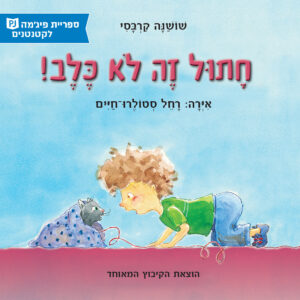 A Cat is Not a Dog!
A Cat is Not a Dog! 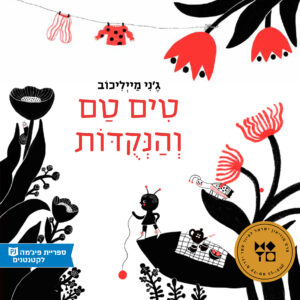 Tim Tam and the Spots
Tim Tam and the Spots 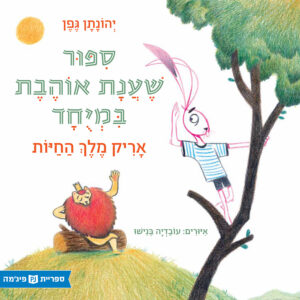 A Story that Anat Especially Likes
A Story that Anat Especially Likes 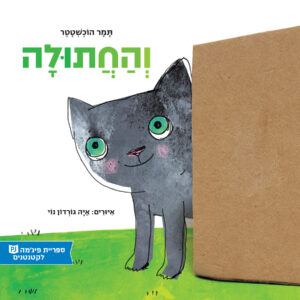 And the Cat
And the Cat 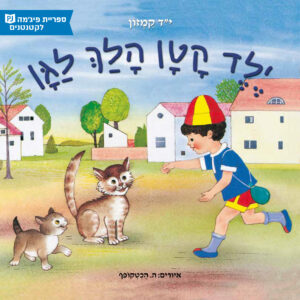 A Young Boy Went to Kindergarten
A Young Boy Went to Kindergarten 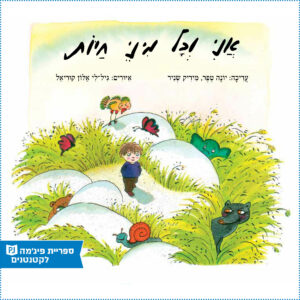 All Kinds of Animals and Me
All Kinds of Animals and Me 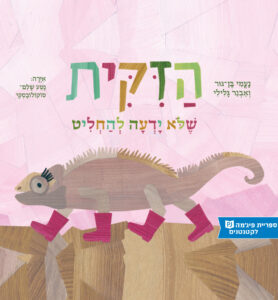 The Chameleon Who Couldn’t Decide
The Chameleon Who Couldn’t Decide 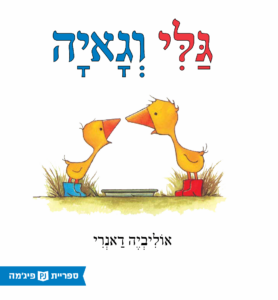 Gali & Gaya (Originally: Gossie & Gertie)
Gali & Gaya (Originally: Gossie & Gertie) 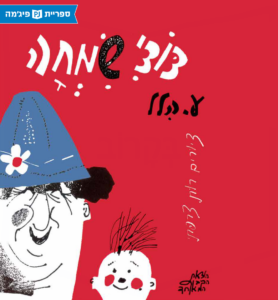 My Uncle Simha
My Uncle Simha 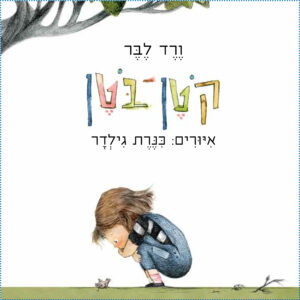 Little Peanut
Little Peanut 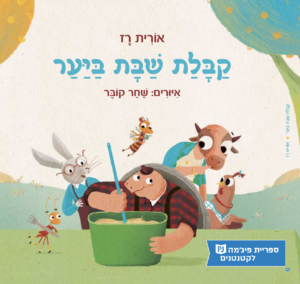 Shabbat in the Forest
Shabbat in the Forest 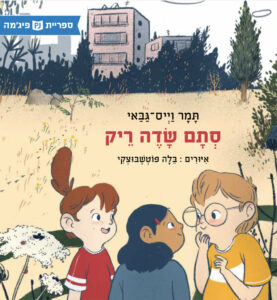 Just an Empty Field
Just an Empty Field 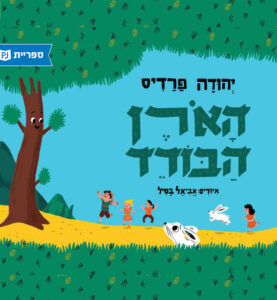 The Lonely Pine Tree
The Lonely Pine Tree 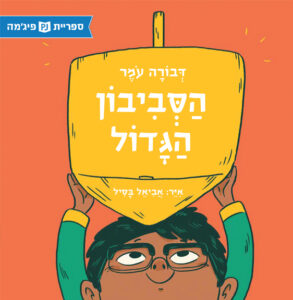 The Big Dreidel
The Big Dreidel 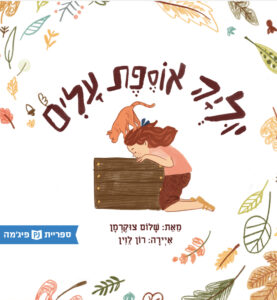 Julia and the Leaves
Julia and the Leaves 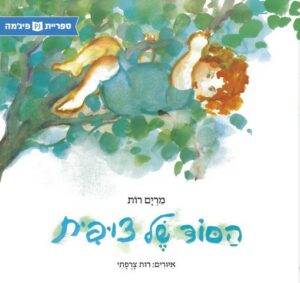 Robin’s Secret
Robin’s Secret 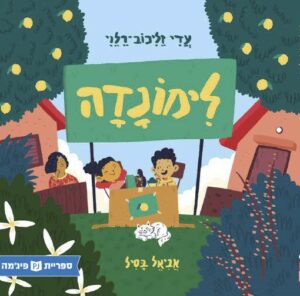 Lemonade
Lemonade 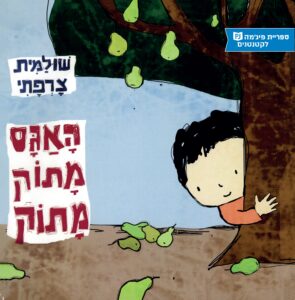 21,600The Pear is Extra Sweet
21,600The Pear is Extra Sweet 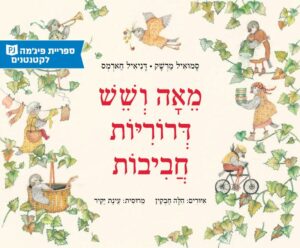 One Hundred and Six Sweet Sparrows
One Hundred and Six Sweet Sparrows 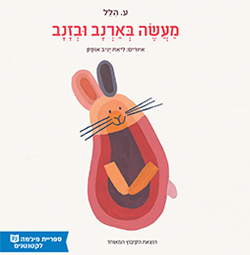 A Tale of a Rabbit and a Tail
A Tale of a Rabbit and a Tail 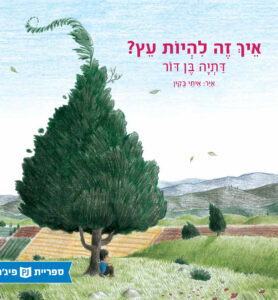 What’s it like to be a Tree?
What’s it like to be a Tree? 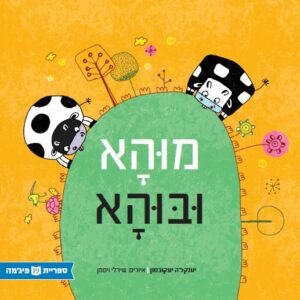 Mooha and Booha
Mooha and Booha 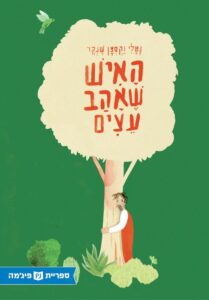 The Man who Loved Trees
The Man who Loved Trees 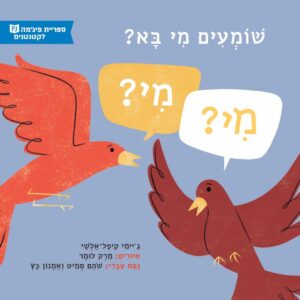 Can You Hear a Coo Coo?
Can You Hear a Coo Coo? 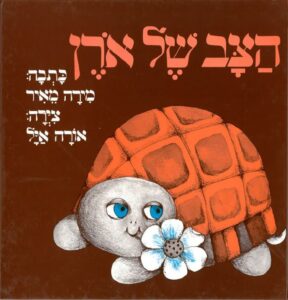 Oren’s Turtle
Oren’s Turtle 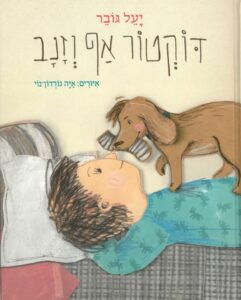 Doctor Yoyo
Doctor Yoyo 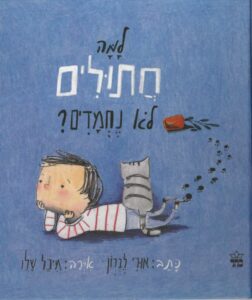 Why aren’t Cats Nice?
Why aren’t Cats Nice? 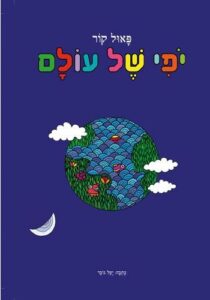 Beautiful World
Beautiful World 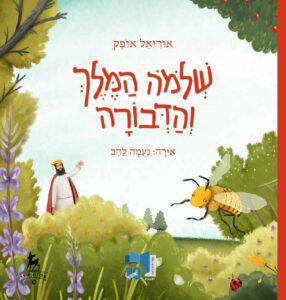 King Solomon and the Bee
King Solomon and the Bee 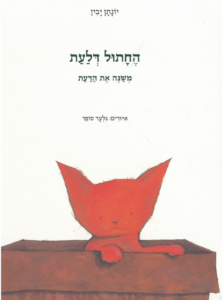 Pumpkin the Kitten
Pumpkin the Kitten 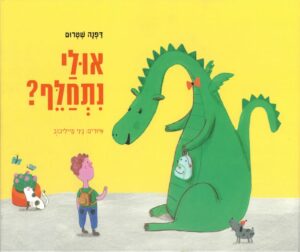 How about Changing Places?
How about Changing Places? 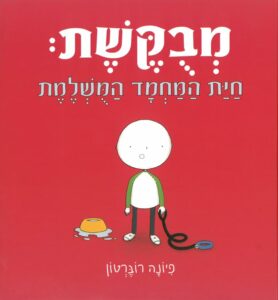 Wanted: The Perfect Pet
Wanted: The Perfect Pet 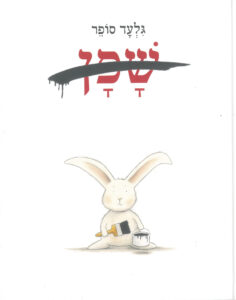 Shafan (Hyrax)
Shafan (Hyrax) 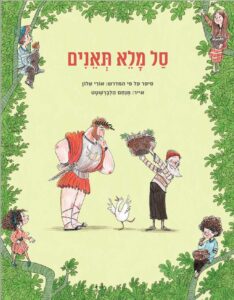 A Basket Full of Figs
A Basket Full of Figs 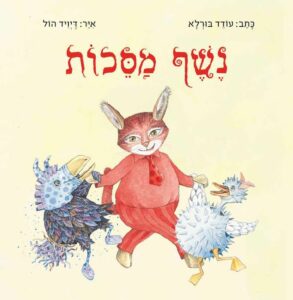 Masquerade
Masquerade 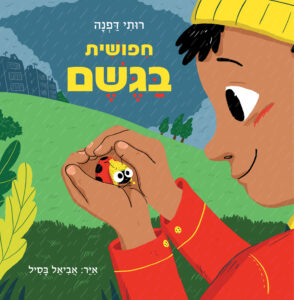 The Ladybird in the Rain
The Ladybird in the Rain 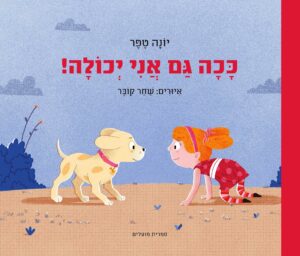 I Can do it too!
I Can do it too! 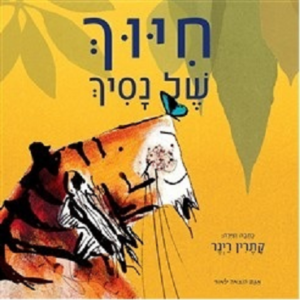 Augustus and his Smile (Hebrew title: Prince’s Smile)
Augustus and his Smile (Hebrew title: Prince’s Smile) 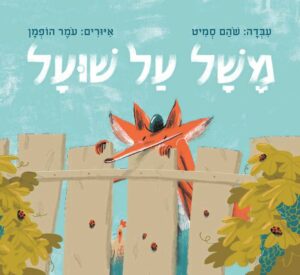 Vineyard
Vineyard 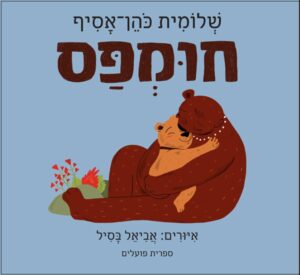 Brownstripe the Bear
Brownstripe the Bear 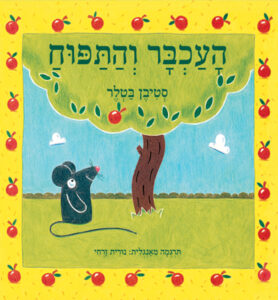 The Mouse and the Apple
The Mouse and the Apple 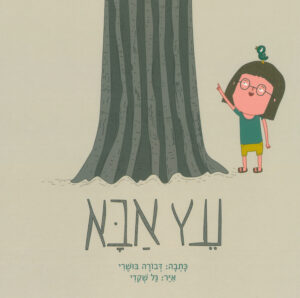 The Daddy Tree
The Daddy Tree 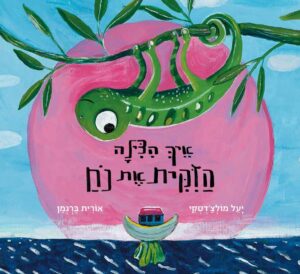 How the Chameleon Saved Noah
How the Chameleon Saved Noah 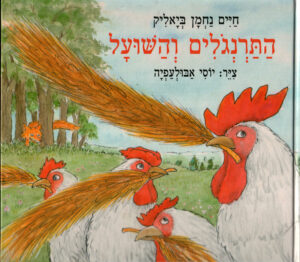 THE CHICKENS AND THE FOX
THE CHICKENS AND THE FOX 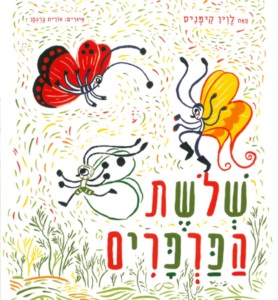 The Three Butterflies
The Three Butterflies 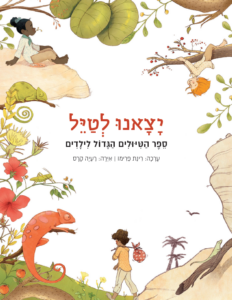 The BigBook of Trips
The BigBook of Trips 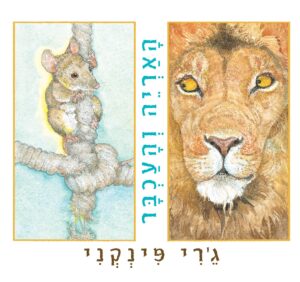 The Lion and the Mouse
The Lion and the Mouse 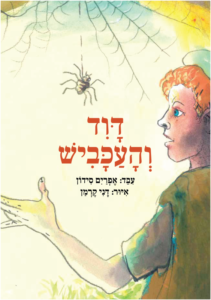 King David and the Spider
King David and the Spider 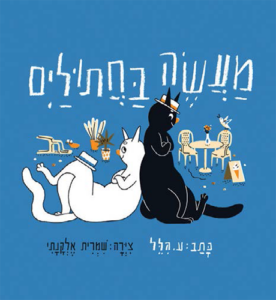 A Tale of Two Cats
A Tale of Two Cats 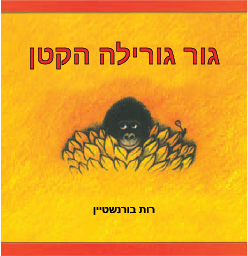 Little Gorilla
Little Gorilla 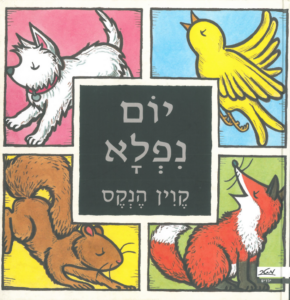 A Good Day
A Good Day 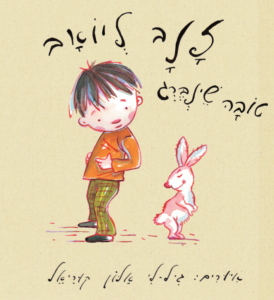 Tail for Yoav
Tail for Yoav 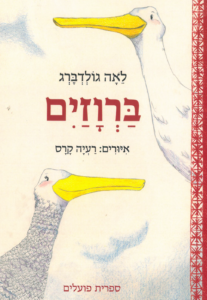 Two Ducks
Two Ducks 







